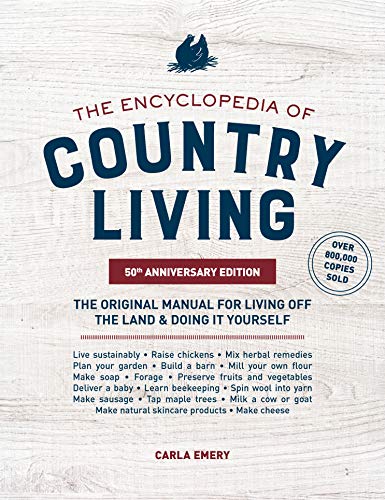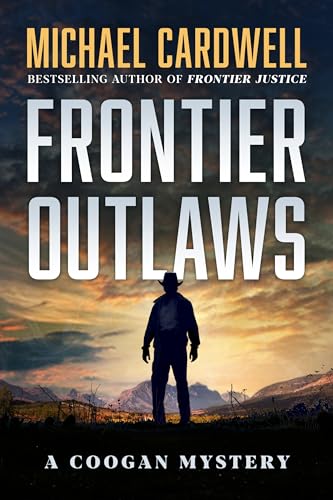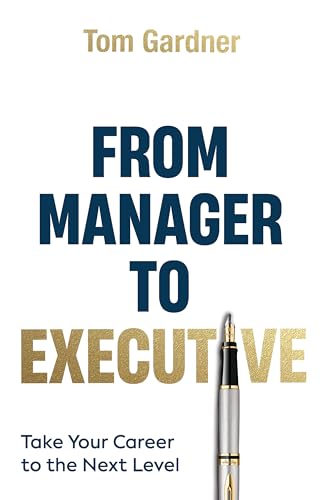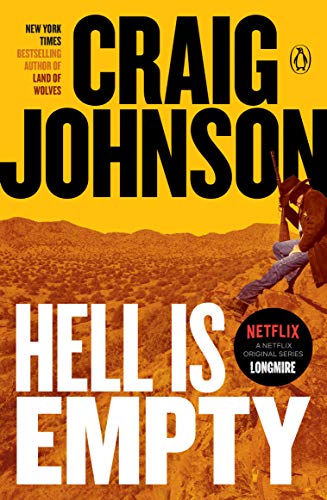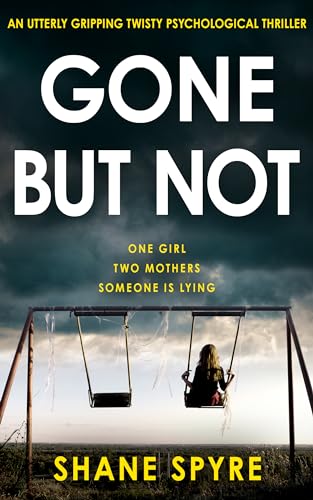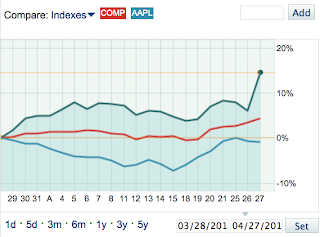INTRODUCTION
There’s a way of thinking about food that’s a problem, and a way of thinking about it that isn’t a problem, and the problematic way corresponds to feeling out of control around food and to having a heavier body. Your relationship with food, which is based on how you think about it, makes all the difference. You have different relationships with your mother, your brother, your friend, your boss, and your lover, and you think about all of those people differently. In the same way, you have an easy or a challenging relationship with food, depending on the way you habitually think about it.
Let’s begin to explore this. How do you relate to food? As a lover, a friend, a god, an enemy, a nutrient? What is your image of yourself in relationship to food? What are the thoughts and self-images that mediate between you and food? When you remove all the thoughts and images that mediate between you and food, what’s left? Just a simple, pragmatic relationship with food. That is the goal of Skinny Thinking: to help you develop a simple, pragmatic relationship with food.
We bring so much baggage about food into the present moment that it distorts our view of food, causing us to think about and relate to it in an unhealthy way. The exercises in this book will help you unpack that baggage and see the truth about food so that you can have a simpler, wiser, and more practical relationship with it.
I know firsthand about this baggage because food has always been my Mount Everest. If folks were ever deluded into believing that I had it all together, all they had to do was share a meal with me. If they dug a little deeper, discovered my history of dieting, and looked at the range of clothing sizes in my closet, they didn’t have to be Columbo to figure out that something was off. Not only did I not have a handle on how to eat, my overeating hid a myriad of other sins, namely repressed anger, low self-esteem, and a propensity for people pleasing.
In this book, I’ve included many snippets from my journey toward moderate eating and attaining a healthy weight and body image. Yet this book is not about formulating a newfangled eating or exercise plan that will deliver the perfect body to please the ego, like so many other diet books are. It is about forming a new, rational relationship with food, weight, and your body, free from past suffering and worries. The good news is that Skinny Thinking is not a new fad or trend. If you put the Five Steps that you will soon learn into practice, you will keep your healthy, thinner body permanently and end the yo-yoing forever.
How to Read This Book
Please go through the book sequentially at first and begin to put the Five Steps into practice in a way that works for you. You may decide that you would rather implement the Third Step first and end with the Second Step. Or you may find that you want do them all at the same time! The best guide for how to proceed is your own inner knowing. For me, a few of the steps took root simultaneously, but the steps are presented here in the order that I used to become free from my compulsive eating.
Because everyone is different, we all operate on different timetables. You may be able to master the First Step right away, while your friend takes three months to complete it. And she may master the Third Step right away, while you take longer. The important thing is that you learn about the steps in order because the understanding that goes with this new relationship with food is cumulative and sequential.
Support can be helpful on this journey. Get hooked up with a buddy through the Facebook fan group SKINNY THINKING! By Laura Katleman-Prue. Then, log on to the Skinny Thinking website (www.SkinnyThinking.com) to sign up for the e-newsletter. Check out the website calendar for Laura’s Skinny Thinking Workshop schedule, as well as her conference call and podcast schedules.
The Skinny Thinking Approach
This approach is about learning to align with your true nature rather than with the false self or ego. When you are in touch with what I call the true self or the Wise Witness, you are in touch with a mature, wise part of you at the core of your being. When you are aligned with that, rather than with the ego or negative thoughts that constantly chatter in your head, you feel happy and at peace. The ego experiences separation from other people and creates the fear at the root of your suffering, including eating-related suffering. When you are identified with the ego instead of the Wise Witness, you innocently make choices that are contrary to your physical, psychological, and spiritual well-being.
By using the Five Steps, you will see that when you’re identified with the ego, you relate to food from your conditioning, and this causes you to look for things from food that it was never designed to provide. From this place, you may overeat or eat the wrong foods because your uninvestigated thoughts are mediating between food and you. The ego tempts you with a thin sliver of truth, the pleasurable aspect of eating, and filters out everything else. Then, based on this slant, it creates desires and drives that interfere with a simple and natural relationship with food. Those drives and desires impel you to reach for food whether you’re hungry or not, and before you know it, the pounds are piling on.
But when you’re able to drop out of the ego and move into alignment with the Wise Witness, those thoughts disappear, and you’re able to see a pure, practical way of eating that’s based on food’s true function. This natural way of relating to food includes the entire picture-the “whole truth about food.”
You can become free from ego-based distortions and overblown desires by not listening to the thoughts that create them and by seeing them for what they are-conditioning that keeps us imprisoned in egoic consciousness and suffering.
Although this book is about healing eating and body-image issues, it has another potential benefit: helping you experience who you really are beyond the ego. As much as your troubled relationship with food may have been the bane of your existence, your suffering has motivated you to pick up this book and has brought you to an exciting watershed in your evolution: realizing that your ego has been lying to you for years. This willingness to see the truth makes permanent healing a real possibility and turns a wonderfully hopeful new page in the story of your journey.
If it does its job, Skinny Thinking will act like smelling salts, waking you up from your food nightmare. My promise to you is that if you keep an open mind and are willing to put the Five Steps into practice, this will be the last book you will ever have to read on this subject. Weight and food worries will become relics of the past. Once and for all, you will finally make peace with the eating and body-image issues that have plagued you, and experience the freedom that is your birthright.
CHAPTER 1
Freedom Is Possible
Yes, it is possible to be free from your obsession with food and body weight! It is possible to live without worrying about what you will eat next and whether it will make you fat, or if you’ll have the willpower to eat in a way that keeps you from busting out of your jeans. It is possible to free yourself from troubles with food that cause a myriad of health problems, including weight gain. It is possible to live without measuring your self-worth by the vicissitudes of the bathroom scale. It is possible to leave this seemingly insurmountable source of suffering behind.
Not only is this possible-you’re already halfway there! By reading this book, you’ve taken the single most important step, without which no healing is possible: You’ve decided that you don’t want to suffer anymore. In effect, you’ve said, “Enough already!” You’re ready to find a way out.
Your suffering has led you to want freedom more than you want your old habits. You’re ready to end your romantic relationship with food, to stop seeing it primarily as a source of pleasure and entertainment rather than as nice-tasting nutrition, and to finally be free. And this is indeed a freedom book, not just the usual diet book that’s focused solely on losing weight. It will help you create new habits, which will allow you to lose weight and keep it off this time. Although the information in this book may not necessarily be what you want to hear, if you really want to be free, and not just continue to yo-yo, you have to change your relationship to food fundamentally and permanently. If you do this, you’ll be free from torment and have the healthy body that you want.
The purpose of this book is to help you see the whole truth about food and what’s been going on in your relationship with it. No matter how long you’ve been struggling with food, you don’t have to take this issue to your grave. You can free yourself of it for good. All you have to do is follow the Five Steps.
In the upcoming pages, you’ll see how your thinking has led to an overblown relationship with food and that this relationship is the root of your weight issues. You will discover that romanticizing food leads to being overweight, and that looking in the mirror from your ego’s perspective reinforces body-identification and causes suffering.
Thankfully, there is another way: Moving out of ego-based thinking and into the Wise Witness. This way of being sets you free and leaves worries about weight in the distant past.
Freedom Exercise
This exercise will help you imagine the life you would have if you took back your power over food:
Close your eyes and get in touch with the impact of food and weight issues in your life. What have they cost you mentally, emotionally, and spiritually? How have they impacted your self-esteem and your relationships? Have they kept you from following your heart and going after what you’ve wanted?
Now imagine how your life would be if you felt free and relaxed around food. Imagine that it no longer absorbed your mental energy. You no longer feel powerless or afraid, but aligned, balanced, centered, and confident. How would you live? How would you treat yourself and others? Imagine all of the energy that you used to devote to worrying and thinking about food flowing into creative and fulfilling endeavors in your life. How does your body feel? Notice any emotions or sensations that arise. Use this exercise as often as you can, even once a day, to support the permanent change you’re making in your relationship to food.
This exercise shows you the cost of your romantic relationship with food. From there you experience what would be possible if thoughts about food no longer dominated your life. I promise you, there is life after your love affair with food! A rich life replete with the benefits that come from living in a healthy body and in alignment with a fulfilling life purpose in which food thoughts no longer take center stage. When a pesky food thought is on the scene, and you’re tempted to follow it, ask yourself, “Is it worth it? Is it worth giving up my freedom to follow this thought? What is my freedom really worth?”
Why Are Food and Weight Issues So Tough?
Why are food, weight, and body-image issues so intransigent? The quick and dirty answer is: We’re programmed to listen to and believe our thoughts. In the case of food and weight, our egoic mind pits two stubborn, mutually exclusive desires against each other: the desire to experience taste pleasure from food and the desire look good. No wonder we’re in a pickle! On the one hand, our bodies need food to survive and we’re programmed to adore food. On the other hand, we’re bombarded with media images of young, thin, attractive people, and brainwashed into thinking that we should look that way, too.
We’re like pendulums swinging from one end of the desire-fulfillment scale to the other. First, we indulge our desire to eat for pleasure, which causes us to gain weight. Then, we feel miserable because we’ve failed to satisfy our desire for thinness. Next, we diet, lose weight, and feel deprived of the food we love. Our deprivation causes us to desire pleasure food (foods with little or no nutrition that are ultimately not fulfilling), and eventually, we give in, overeat, and gain weight again. Our weight gain brings us full circle, causing the desire to be thin to kick in again, and on and on it goes.
Living between these two competing desires is quite a conundrum-for everyone but the ego. As long as we have a problem, the ego has a job. It’s in the problem creation and solution business. For those of us who have food and weight issues, it’s a full-time job. Once we’re hooked, the ego can just kick back and sip a piña colada, having achieved its goal of ensnaring us in constant problems and keeping itself employed.
The good news is that the food and weight issues that have been the bane of your existence are also your custom-designed ticket to freedom. The question is: Will you use it? Are you ready to be done with this issue once and for all? Are you willing to try something new? Are you ready to have a healthy relationship with food and your body? If your answer is yes, the principles presented here can free you. All you have to do is let go of any preconceptions and memories of past failures, and open your heart and mind to receiving new information through both these pages and your own intuition.
Is This Another Diet?
Whenever I utter the word “diet,” people fidget in their seats, their faces harden, and they say, “Oh no-not me. I’m not going there.” But before your shutters slam shut, please let me explain.
Skinny Thinking is not a diet; it’s about creating a new relationship to food that automatically results in greater health and a healthier weight. Diets are temporary. People are willing to stick to them for a while in order to lose weight, but then they stop and go back to their old habits.
The goal of Skinny Thinking is to change your fundamental relationship to food, how you habitually think about it. If you don’t do that, you might as well hang it up right now. No diet, no matter how vigilant you are, is going to work long term without that component.
Relax. I’m not asking you to go on yet another diet. Instead, I’m encouraging you to:
1. Permanently change your diet and
2. Change your relationship to food.
Let’s take these one at a time. Changing your diet means changing what you’re eating habitually so that most of your calories come from healthy, nutritious, whole foods, and eating reasonable portions.
The second component is changing your relationship with food. Bad eating habits in part stem from the way you’ve been thinking about food. Hence, the diet I advocate is a “thought diet,” questioning and debunking the fantasies that have been mediating between you and food.
When it comes right down to it, Skinny Thinking is a truth-telling exercise to bust through your illusions and beliefs about food. Ultimately, you must begin to let go of deluded, misguided beliefs and your romanticized relationship with food in order to stop suffering and yo-yoing. In my experience, the best tool to achieve this is inquiry.
To recap, neither component can work without the other. Merely changing the foods you eat and your portion sizes isn’t enough. Neither is changing your relationship to food, if you’re still getting the bulk of your calories from junk and eating unreasonably large portions. A bird needs both of its wings to fly, and healing your food issues requires both components-a shift in your diet and in your relationship with food-to be complete and lasting.
The truth can’t be changed, because the truth is always the truth. You can’t continue to eat the way you’ve been eating and have the healthy body you want. It’s simple and unambiguous. Yet many of us have been in denial, pretending that it isn’t so. We want to look good, feel good, and keep eating all the junk we want. C’est impossible!
It’s natural to look for a way to somehow have your cake and eat it, too, to maintain your bad habits and still enjoy a healthy, slim body. It seems like other people can do it, right? Why not you? But do you really know what other people are actually doing to maintain thin bodies while they scarf down massive slabs of chocolate fudge cake?
Very few people can eat whatever they want and stay thin. Even if they manage to stay thin, what are the health consequences of eating all that junk? Once again, the truth is still the truth: You have to change your old habits if you want to heal this issue. Only then will you start to reap the rewards.
If you trade your old eating and thinking habits for healthy ones, over time you will naturally settle into a healthy weight. Rather than focusing on a goal weight, as you might have done when you were dieting, focus on not going back to your old habits.
You might as well just bite the bullet. Look yourself squarely in the eyes and tell yourself the truth: “(Your name), you can never go back to your old habits and stay thin.” This is the truth that most people don’t want to face.
To be really free, you have to transform your relationship to food forever. You have to be willing to change the way you eat and think about food and never go back. That’s the simple, kind truth of it. Now go forth and heal! You can do this!
My Story
From the age of 16, when I went on my first real diet, until I was 49, I succumbed to the highly lauded cultural imperative to “be the best I could be” by dieting, and my life traced the self-worth-negating arc of the overeating-dieting pendulum. Like the rising and setting sun, you could set a clock by my eating cycles. This inevitable oscillation was a safe haven that allowed me to postpone my life until I had the right body size to create a successful life.
Dieting led to overeating, and overeating led to yet another diet. This is the cycle of desperation, hope, elation, deprivation, indulgence, and self-flagellation you sign on for when you listen to the ego’s perspective about food and life. When you decide for the umpteenth time to go on another diet without permanently changing your relationship with food, you delude yourself into believing, despite ample evidence to the contrary, that this will be the one that works.
One of the reasons it was so hard to maintain my weight, in spite of all of my dieting, was that the intensity of my love affair with chocolate equaled my desire to have a thin body. In my early 20s, this love had its business advantages. Because I couldn’t think of anything I loved more than chocolate, it was easy to follow the advice laid out in entrepreneurship books: Sell a product you’re excited about. It was a no-brainer. Brownies, the richest, chocolatiest dessert I could think of, would be my product-and voila! The Boston Brownie Company was born.
For a certified chocoholic, my new business was heaven, a dream come true. Like an addict suddenly finding herself with an unending supply of her drug of choice, my cup runneth over. I filled my days sampling gourmet chocolates, swirling them into rich batters, and baking them to sinful, gooey perfection, all in the noble service of offering the public the most perfect brownies. Who says that being an adult is no fun?
Having spent my childhood using food as a source of comfort and pleasure, it was natural for me to parlay this food focus into a business. Unknowingly, I’d developed an addictive relationship with sugar and chocolate, and now my new business gave me an excuse to keep my fridge stocked with a delicious combination of both-brownies.
To other people, starting a business like this was not only adaptive, it was laudable. I was a 20th-century woman, exemplifying the pioneering spirit that made our country great. Certainly, that spin sounded a heck of a lot better than “I am an addict getting my daily fix!”
Eating Is a Messy Business
After a less than stellar performance at my college dance recital, my best friend, Lisa, tried to reassure me that I had done fine. But I knew better. Lisa was in best-friend mode, doing what friends are supposed to do-help their buddies feel better by sugarcoating the truth. Whether I’d blown it or not, what mattered was that I was upset with my performance. Convinced that I’d humiliated myself, the experience reinforced my core belief that I couldn’t do anything right.
Lisa, partner in crime and eating buddy extraordinaire, and I decided that there was only one thing to do: Help me escape my perceived public humiliation by eating up one side of the town and down the other. Like a lover planning a secret tryst, we excitedly choreographed our plan for procuring the forbidden object of our lust-pleasure food. Starting with the local coffee shop, we crammed down grilled cheese sandwiches (of all things!) at warp speed. After the sandwiches, I felt full, but stopping was not an option. No, by gosh, we were on a mission-a mission of avoidance, and central to that mission was eating ourselves senseless. That evening, we would stuff ourselves with large quantities of the naughty foods we denied ourselves the rest of the time.
For a few short hours, I believed bingeing would help me avoid feeling like a failure. I hoped that if I ate massive quantities of food, I would numb or avoid the powerful, messy emotions that left me feeling helpless, hopeless, and most of all, out of control.
After the grilled cheese sandwiches, we sped off to our signature bingeing destination: Foster’s, an all-night donut shop. Salivating as we peered through the window, our eyes met a confectionary vision of perfectly shaped cruller soldiers, nobly sacrificing themselves into an enormous vat of boiling oil. The flimsy sticks emerged seconds later, metamorphosed by the baptism, inflated to twice their original size. Then, for the pièce de résistance, a pudgy, apron-clad man cavalierly scooped them up and deposited them onto sugar-encrusted racks.
Although we were charmed by the array of beguiling donuts and crullers before us, Lisa and I remained loyal to our favorite treat: apple fritters. They weren’t pretty. In fact, if you didn’t know any better, you might take fritters for defective outcasts, the unfortunate result of a donut mishap. These misshapen, brown blobs looked more like weapons than donuts-crusty points jutting out in all directions. Only the sheen of their sugar glazing gave them away as purposefully designed treats.
Fritters were not for the faint of heart-only a truly intrepid binger dared indulge in these enigmas. When pierced, their strange outer crust revealed a soft, breadlike interior delicately veined with syrup-drenched chunks of apple. Somewhere, a donut genius had conceived the perfect taste and textural complement to a fritter’s crusty outer shell. Suffice it to say that no Foster’s run was complete without a box of fritters, and as a matter of principle, sort of a binger’s code of ethics, fritters never made it home.
Pretending to be throwing a party, Lisa also ordered boxes of warm, gooey donuts, casually tossing in comments like, “Bobby loves this one. Tony wants that one. Let’s get three of those.” in order to divert attention from the embarrassing truth-that our party was actually a party of two.
Visits to Foster’s were never casual. There was a frenzied hyperactivity to our trips there, and this night was no different. Laden with donut boxes, we headed off to buy pizza and ice cream. Two hours after we began our eating rampage, we triumphantly sped back to the dorm.
At school, we went into stealth mode, transferring our booty from the car to Lisa’s room undetected. After lining up our feast picnic-style on the floor, we ate ourselves into oblivion. Rhythmically stuffing ourselves with a practiced precision, we entered a food-numbed trance, anesthetizing ourselves from painful thoughts and feelings, pretending that we could escape life’s disappointments-and there was some truth to this because for some part of those few hours, we did escape. We did control our lives by exchanging emotional pain for physical pain, at least for the moment, until we had to face the triple whammy: the painful emotions that precipitated the binge, the guilt over the loss of willpower evidenced by the binge, and our imminent weight gain.
Hours later, our binge wound down, and the food we’d longed for and fantasized about was now repulsive. Sleep arrived, mercifully sparing us any further protests from our swollen bellies. There we lay until daylight-stuffed and exhausted, trapped in a maze of donut and pizza boxes, revealing an array of half-eaten, waxy donuts and congealed pizza slices.
Having a Party with Food
A binge party like mine doesn’t happen out of the blue. I had a history, beliefs, and perceived needs that led me down the path of an out-of-whack relationship with food.
As a child, I had learned to numb out with food. Because this was my pattern, when I felt uncomfortable emotions on the night of my college dance recital, it wasn’t a surprise that I turned to food to escape from them. Because my drug of choice had always been food, at the first sign of an unwanted emotion, I dove headfirst into sweet, fatty, starchy, or salty food, swallowing the food so fast that I barely chewed, much less tasted it. Distracted by the angry, fearful, or worrisome thoughts that precipitated my frenzied eating, I entered a trance, making it easy to miss the actual experience of eating. One after another, the negative thoughts wove an evermore compelling and upsetting story, intensifying the feelings and leading to more unconscious, frantic, compulsive eating.
Caught in the talons of stressful thoughts, eating was the only way I knew to take care of myself. The thoughts seemed so logical and true that it didn’t occur to me that I could ignore them. Instead, I would anesthetize the pain of the upsetting feelings created by my negative thoughts, stuffing myself with more food.
There are parties with food, and there are PARTIES! We can have a small party or an over-the-top party. The more stressed out and out of balance we are, the more likely we’ll have a party that is out of balance and, ultimately, unsatisfying. We can have a party with food in moderation, and there’s no harm done, but bingeing parties are not parties at all in the end.
Bingeing begins with a desperate, empty feeling that leads to an uncontrollable desire to eat pleasure food. Entering a hypnoticlike state, we’re unable to stop gorging even after we’ve become uncomfortable or sick. Bingeing has a self-destructive, unconscious component that’s connected to repressed emotions. As a result, there can be an unconscious motivation to hurt the body.
If you’re bingeing, I recommend working with a skilled, empathic psychotherapist. The information in this book can be a helpful adjunct to psychotherapy. Psychotherapy teaches you to accept and positively express your feelings, needs, desires, and drives. Learning not to repress anger or drives, including egoic drives, is basic emotional hygiene-the step before going beyond the mind and the emotions.
You don’t have to be bingeing, though, to benefit from the Five Steps. If, like many people, you find yourself eating when you’re not hungry, it’s likely that you’re using food to get happy, and you can learn to change that habit. Eating when you’re not hungry creates a cycle of suffering: You eat to get happy, feel bad for indulging, and then eat more to escape your emotional discomfort. I’m sure you’ll agree-this isn’t the most constructive strategy!
Why Me?
Why was I given eating and body issues that have caused me untold suffering? If the answer is that these issues lead to growth, it’s fair to ask, “Who set up this sadistic system where suffering leads to growth?”
At first, it can feel like a cruel joke of the Creator. Does He or She delight in our pain as we get on and off the dieting merry-go-round? How could suffering with eating and body image issues be a good thing? The truth is that eventually, if we’re lucky, this suffering becomes so unbearable that we’re no longer willing to experience it. We come to a crossroads and decide that we’re not willing to live this way anymore. We set off in search of books like this one to help us recognize the fallacy of painful beliefs that tell us food is the “be all and end all” and that our bodies should look better than they do.
Like touching a hot stove over and over again and deluding ourselves into believing we won’t get burned this time, we continue to turn to food for things it can’t give us and berate ourselves for how our bodies look. Yet body and eating issues can help heal us and lead us to a happier life when we realize that the way we’ve been thinking and living doesn’t serve us. The stressful issues that dog us year after year are most instrumental in catalyzing our growth. Even though they hurt like heck, they’re ultimately our ticket to freedom from suffering.
The Ego and the True Self in the Battle of the Bulge
The epic battle enacted under the guise of the battle of the bulge is the struggle between the ego, that negative chatterbox in our heads, and the true self. It’s the suffering caused by this battle that moves us to break free from our unconscious patterns and conditioning and instead live from the true self. In this state, we experience the peace and joy available in each moment and that can never be taken from us. This is the battle: resistance versus acceptance; the ego versus the true self; self-delusion versus truth; the ego’s small sliver of truth about food and the body versus the whole picture.
The Villain
The villain in our story, the ego, has three faces: the Critic, the Child, and the Dreamer. In our struggles with body image, the ego in the form of the relentless Critic is the judgmental voice inside our head berating the way our body looks, telling us: “You’re too fat.” “Your chest is too small.” “Your thighs are too big.” “You need to look like the images you see in the media-young, thin, and beautiful.” “You’ll never attract the kind of relationship you want unless you get into better shape.”
When it comes to food, the pleasure-seeking Child causes us to gain weight by telling us things like: “You’ve been working so hard and deserve a slice or two or three of cheesecake.” “You should live a little. Give yourself a treat.” “Eating a bit more won’t hurt.” “You’ve had a lousy day, so why not make yourself feel better with a little pleasure food?” “Indulge now and worry about tomorrow tomorrow.”
The ego is a lot of things, but it’s no fool. To stay employed, it invented the never-ending “build-a-better me” project. Here’s how it works: the Child creates our eating problem by tempting us to use pleasure food as a treat, cajoling us to eat a few more bites, even when our stomachs are bursting. Then, the Critic has the unmitigated gall to shame and castigate us over the weight gain the Child caused! The coup de grace comes as we’re sobbing into our Häagen Dazs carton, looking to escape the misery of a belly that overflows our jeans. That’s when the ego in the form of the Dreamer rides in on a white steed, offering salvation-a new diet that will rid us of our excess weight and let us become the sexy vixens we’ve always known we could be. It declares that we still have a chance to win the love and attention of the perfect prince or princess and live a happy life. Just when our storybook ending is within reach, the Child appears again, enticing us with momentary taste pleasure. When we predictably fall off the wagon due to the Child’s incessant luring, the Critic will be there to chastise us, and when we feel sufficiently beaten down, the Dreamer offers salvation-and we’re off and running again.
As you can see, the ego really knows how to keep us busy and distracted. We can become so caught up in trying to hurdle its eating and weight-loss obstacles that we don’t realize that it’s causing our suffering. Once we stop listening to the ego and doing its bidding, we immediately experience the pure joy of just being. This is exactly what the ego wants to keep from us because once we discover we don’t need it to be happy, the ego’s out of a job. But we can take our power back and choose instead to rest in the peace and contentment that’s available in every moment in the natural state of the true self. The more we do this, the more time we spend in the true self, the easier it is to heal our eating issues and lose weight.
The Hero
Now that we’ve seen the villain in our story, it’s time to get to know our hero, the true self, or the Wise Witness. The Wise Witness is our true self, the one who naturally knows what to eat to keep us healthy. It’s who we are when we’re not listening to and believing in the ego. It’s that inner place of calm and serenity that we’ve all visited in moments when the mind is quiet. Think back to a time when you’ve felt completely at peace. That delicious feeling is the true self. Even though we may not be aware of this consciously, each of us taps into it every day!
We can see the true self clearly in the innocence and openness in babies and animals. They’re the true self embodied. I’m not suggesting returning to the pre-egoic state but, rather, that if we want to experience life from a delightful place of openness, wonder, and curiosity, we have to relearn how to connect with the true self, shedding what no longer serves us so that our natural state of radiant happiness shines through.
Connecting with the true self or the Wise Witness means entering the thought-free state beyond identification with our minds and bodies. Although meditation is the most common way to move out of the mind, it can happen anywhere, anytime, as long as we’re not caught up in thoughts or feelings. We can be noticing the clock on the wall, a leaf floating in the breeze, or our hand as we turn the page.
When you are in the ego-based state of consciousness, thoughts and feelings come between you and direct experience. Here’s how it works: you’re in the true self, in a moment of awe, when you see a beautiful sunset, and when thought comes in, saying, “Oh, what a beautiful sunset,” you’re back in the ego.
Any information from the senses, before thought comes in, takes us to the true self. If we are to break the habit of paying attention to and following our thinking, which is responsible for our food issues, it helps to cultivate a new habit of diving into the space between our thoughts. To do that, try to spend at least 10 to 15 minutes every day sitting quietly, either in silence or while listening to restful music.
Conditioning
The ego, or our conditioning, is made up of painful beliefs we innocently formed in childhood to protect ourselves. Not only do these beliefs no longer serve us, they keep us from our natural happiness. Given this, there are two reasons we might overeat even a healthy food:
1. To nurture ourselves or
2. To stuff our feelings-to use food to medicate ourselves and avoid having to feel our feelings.
In both cases, we overeat because our conditioning has been triggered, either by an event or by our negative thinking. But with this triggering comes an opportunity to become free from it once and for all. The First Step, Wise Thinking, which you will learn about in the next chapter, shows you how to heal conditioning by questioning your old beliefs and stepping back into awareness.
There are two ways to approach eating: from the Child’s point of view (our conditioning), which is part of the ego, or from the true self’s point of view. Whenever we’re eating to fill a psychological need rather than a physical need, we’re identifying with our conditioning. The true self, on the other hand, encourages actions that support the optimal functioning of the body, so it’s unlikely that the true self will move us to overeat when we’ve had enough.
The voice of the ego can be loud and harsh or seductive and cajoling. Following it moves us into its painful, damned-if-you-do, damned-if-you-don’t world. The ego seduces us into eating too much of the wrong foods, and then berates us afterwards. Anything to control us! Luckily, just because it is trying to tempt us doesn’t mean we have to pay attention to it. We are in control of our attention, and if we don’t like what is playing on “ego radio,” we can simply turn it off, and drop into the true self. Here are some examples of how the Child tries to get us to eat when the body isn’t hungry:
◦ I love this taste. I want more of it.
◦ I’ll be hungry later if I stop now.
◦ That tastes really good. Just a bite or two more won’t hurt.
◦ This is healthy, so I can eat more of it. So what if I’m not really hungry anymore?
◦ I’ve been good; I deserve that second dessert.
◦ I’m bored. What can I eat now?
◦ I should be hungry now. It’s dinnertime, so I might as well eat something.
When we have overindulged, the Critic berates us with harsh judgments such as:
· You know you shouldn’t have eaten that; now you’ll gain weight.
· You are such a glutton.
· It wasn’t enough to eat some of that; you had to go and eat the whole thing!
· You’re insatiable.
· Eating like that is a sin. Repent or God will send you to hell.
· You’ll never get the body you want this way, and then you’ll die fat, unhappy, and alone.
When you notice that you’re eating to fill a psychological need, simply being aware of it can shift you back into the true self. When we’re able to notice our conditioning, this shifts us from identification with it and with the ego to identification with the true self. That’s right! It’s that simple. Noticing it is all it takes.
Becoming aware of your conditioning opens up the possibility of another choice. Rather than following the well-worn path of emotional eating, you can choose not to do that. You can ask yourself, “Is this really what I want to be doing right now? Will it satisfy me forever?” This moves you out of identification with your conditioning and into the true self, your own inner wisdom.
Another way we can tell we’re in the ego is when we’re eating without any conscious connection to the food or the body. We eat unconsciously when we’re either caught up in thought or in the midst of an emotional upset. Neither is a good time to eat because we won’t be able to pay attention to how full we’re getting. Before we know it, the body is stuffed, and we haven’t fully experienced or enjoyed the experience of eating.
The ego is the voice of the extreme. On one hand, it advocates excess and indulgence and on the other, rigid restriction or deprivation. Whenever eating results in suffering, we know that we’re in the ego.
In contrast, the true self advocates balance, health, and temperance. It’s quiet and doesn’t fight for our attention, but nudges us and speaks to us through our intuition. For example, when we’re grocery shopping, we may feel moved to buy something healthy that wasn’t on our shopping list. This subtle nudging is from the true self, moving us in a direction that serves the body’s well-being.
Bringing Awareness to Eating
and
How You Think about Food
When it comes to seeing through the negative beliefs that cause you to bolt toward the fridge, start by bringing more awareness to your eating. Are you aligned with the ego or the true self when you pick up a fork? Are you engrossed in thought or are you present, experiencing directly whatever is happening now?
To align with the true self, continually bring your attention back to awareness by asking yourself, “What’s happening in this moment?” It should come as no surprise that awareness is key in healing our dysfunctional relationship with food. Whenever we are aware, rather than listening and paying attention to thoughts, we’re aligned with the true self, and the ego has no power over us.
For years you may have been innocently overeating because that’s how you learned to comfort and take care of yourself when you were feeling bad. Dating back to childhood, overeating to get happy and stuff uncomfortable feelings may have been how you loved yourself. Now you see that this way of caring for yourself doesn’t serve you and creates suffering rather than happiness and comfort.
An important part of this process is discovering what food means to you. What is the emotional connection you’ve created with food? Are you actually present when you’re eating? It’s easy to become hypnotized by the rhythmic motion of your fork or get lost in thoughts or emotions with little or no attention on how much you’re putting in your tank. No wonder it’s easy to gain weight! Eating without being present is like pumping gas blindfolded from a tank with no automatic shut-off. Neither has a good outcome. One brings a messy gas spillover, the other, a belly spillover.
Awareness Tips
Ironically, those of us who love food and see it as central to our happiness are not very aware when we’re eating. We find ourselves eating quickly or while doing something else, such as driving, talking on the phone, watching television, or reading, so the experience of eating isn’t as satisfying as it could be.
Begin to bring awareness to the whole process of eating by getting curious about it: When and why do you decide to eat something? What are your eating triggers? How are you feeling while you’re eating? Are you engaged in the experience of eating, or is your mind somewhere else, engaged in problem solving or ruminating over a frustrating experience? Follow these next steps to help you begin to bring more awareness to your eating:
1. Set the intention. Set the intention to bring awareness to your eating and your thoughts about food. Once you have set an intention to understand more about your eating, be prepared for insights to arise.
2. Notice eating triggers. How does eating happen for you? How do you decide when and what to eat? Start to notice your eating triggers. What are you thinking, feeling, or believing when the idea of eating something pops in? What are the emotions and thoughts that send you racing toward the fridge? When you’re bored, is your first impulse to get some food?
3. Be aware of portion size. Become aware of how much food you’re putting on your plate. Is it a reasonable amount? Many of us are used to eating portions that are much larger than we need.
4. Eliminate other activities while eating. What are you doing when you’re eating? Are you driving, surfing the Internet, watching television, or having a heated discussion?
5. Notice your thoughts. What are you thinking about? Are you anxious about paying your bills? Are you replaying an uncomfortable conversation from earlier in the day?
6. Be aware of your feelings. What are you feeling? Are you stressed, anxious, angry, or fearful? Does the life you’re living suit you? Are you doing what you love to do? If your overall choices aren’t right for you, you’re going to feel depressed, and that depression will fuel your food issues.
7. Take some notes. Record any insights or images that come to mind.
I suspect that you’re reading this book because you’re looking for change on a deeper level, beyond just going on a diet-you were moved by the evolutionary impulse for freedom. When we shine the light of our awareness on how we eat and think, it opens the door to a permanent change that transforms our life on every level. We become happier, freer, and more fulfilled.
In the upcoming chapters, you will learn the Five Steps that helped me free myself from my eating and body-image issues. They’re not a quick fix, but they do work if you give them a chance. If you approach them with an open mind and put them into practice, your time and effort will be rewarded a thousand times over!
… continued …
Want to continue reading? Click on the title below to download the entire book for just $7.79!
contains enough twists and surprises to keep even the most hyperactive adult entertained.

